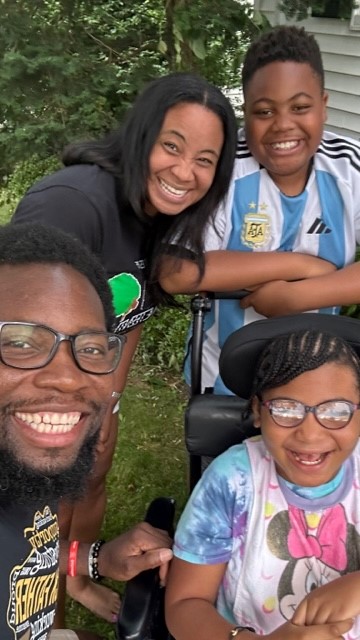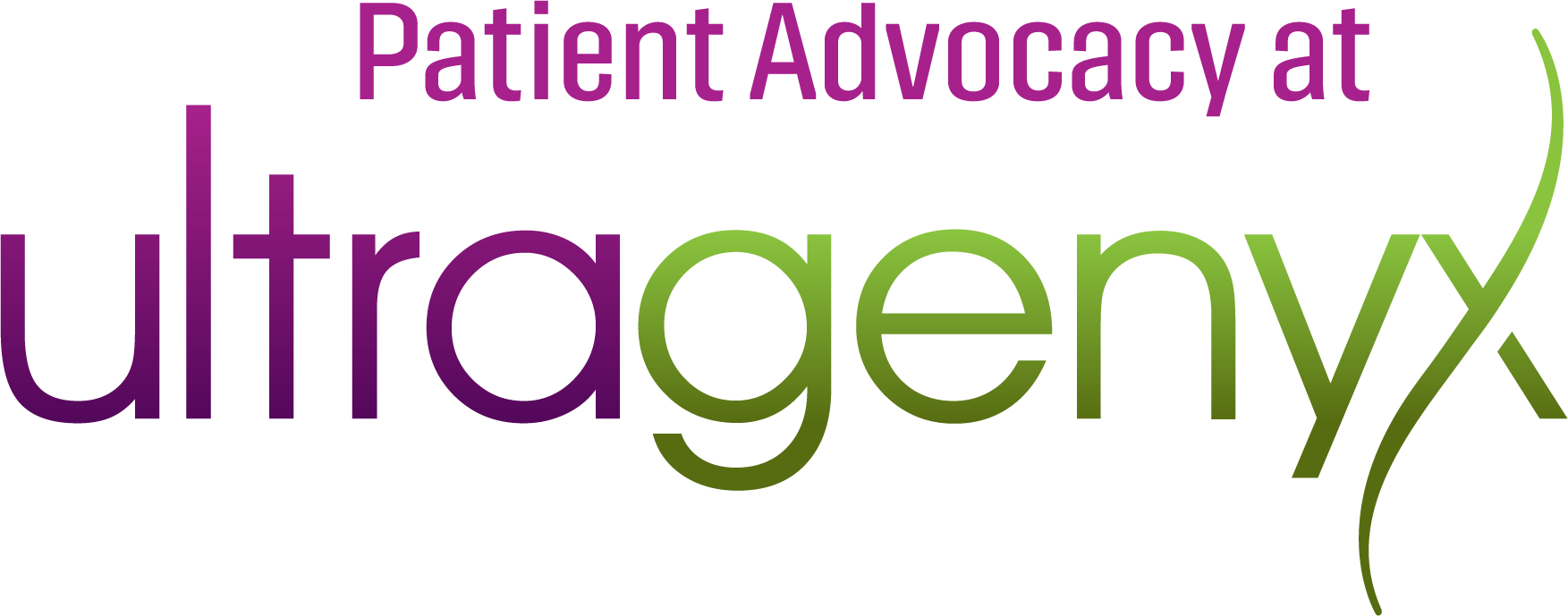I met my husband, Garfield, while I was a freshman at Yale, and he was a junior at University of New Haven. We met at church in New Haven, Connecticut and have been married for 15 years. We welcomed our first son, Daniel, who is 12 years old. On August 14, 2014, our second child arrived, a beautiful baby girl, and we named her Gabrielle, the feminine form of the angel Gabriel, meaning “the messenger and might of God.” Little did we know how true this would be. In addition to our children, their “big sister” Lady (a cocker spaniel) rounded out our family. We recently added to our family with a poodle puppy, Blaze.

When Gabrielle was seven months old, Garfield and I noticed that, compared to other babies and to our son when he was a baby, Gabrielle was a little behind in babbling sounds, sitting up, and rolling over. Our pediatrician told us not to worry, that many children are delayed in talking. After expressing our concerns again at the nine-month appointment, he said we had no reason to worry, but that if we wanted to allay our fears, we could get Gabrielle assessed through our Connecticut’s Birth to Three program. They came to our home and did a variety of tests with Gabrielle. We waited anxiously for the results. A couple of months later the specialists returned with the results. They told us that not only was Gabrielle delayed in speech, but that she was severely delayed in all her developmental milestones; gross motor, fine motor, pretend play, everything. We were stunned. Gabrielle then fell under a broad category referred to as “gross developmental delay,” but we had no diagnosis. I changed my then job in finance because of the heavy travel to stay at home and solely focus on Gabby. We learned that early interventions were the best way to support our daughter’s development, and thanks to those 5 day a week therapies, she learned to do many things independently.
One morning when Gabrielle was 18 months old, we found her lying prone on the floor. We rushed her to the hospital. What we thought was a seizure, was actually her lying on the floor to soothe pain from an ear infection. However, this scare allowed us to connect with a leading neurologist at Yale who had a cancellation and was able to see Gabrielle that week! Among other things, she ordered a blood test to determine if she had Angelman syndrome (AS), but the test was negative, so we ruled that out. We spent the next several months attending many medical appointments where our daughter received different diagnoses, such as cerebral palsy and autism spectrum disorder (ASD). A metabolic geneticist ordered a whole-exome sequencing test. The results came back after six months.
On October 5, 2016 (Gabrielle was now 2 years and 2 months old) we returned for the results. The geneticist told us Gabrielle did indeed have Angelman syndrome. We were stunned as we thought this was ruled out. She had a rarer subtype, UBE3A mutation, that didn’t show up with a blood test, only by running a whole-exome sequencing test. I will never forget that day, it felt like time stood still as I heard bits of words, “not fatal, but currently no cure.” “She will live with you forever.” “Seizures.” We were thankful to know what was wrong despite a challenging diagnosis that didn’t give us much hope for Gabrielle’s future. Nothing prepares you for this. We took time to cry, grieve, and breathe. Then I jumped in and got involved in the community and attended an Angelman syndrome gala less than 2 months after receiving the diagnosis. I had to be in the room where people who were researching this disease were. I had to be in the room with families. That decision to get involved was the single best decision for our family. Since 2017, I have served as a board member of an Angelman syndrome focused organization. My husband runs The Chicago Marathon every year to raise money for research and treatment for AS. Our son has met other neurotypical siblings.
Angelman syndrome (AS) is a rare neurogenetic disorder that causes developmental disabilities and neurological problems. It is due to a genetic mutation of the UBE3A gene, located on Chromosome 15 in the brain and affects 1 in 15,000 births. The condition affects males and females equally. There is no cure for Angelman syndrome, and the treatment should focus on helping our kids manage their medical, developmental, and sleep issues. For our daughter, having Angelman syndrome has impacted her sleep and social life, especially out of home and school. Gabrielle began to walk, run, climb on playground toys, and even feed herself independently. She spoke a few words such as “mama,” “hi,” and “yes” and had many signs. We thought our life was good. Then a second devastating rare neurological diagnosis happened.
In 2019, Gabrielle, who was four years old at the time, was visiting grandparents in Oklahoma. In a span of twenty-four hours, she became unsteady, began to lose consciousness. Sadly, she had an autoimmune disease called Acute Disseminated Encephalomyelitis (ADEM) that caused severe inflammation of her brain and the entirety of her central nervous system. She fell into a coma and was hospitalized for over a year, out of state, because the pandemic started and hospitals closed to all visitors, even parents, for the safety of the patients. It was the hardest thing we have ever faced. Currently, Gabrielle is home, but she has experienced severe neurological setbacks and does not walk anymore and remains bed-bound and wheelchair-bound. She still has her contagious laugh and sweet personality and loves yummy food, her family, and her doggy, Blaze.
My advice for other families walking the same path is to know that Angelman syndrome (AS) is part of your child, but it does not define who they are. Each child’s experience with Angelman syndrome is different, so do not assume that your daughter or your son is the one described in the textbook. Know that each person in the family will have different ways of processing the information and coping with the diagnosis. Beyond the diagnosis, ask your healthcare providers ways to support your child. My hope is for more early detection and insurance supports so families can have full access to therapies that will improve the quality of our children’s lives. Finally, get engaged and always, always BELIEVE. That is our family motto. Life will be different, but don’t give up on your dreams for your child.
About Gabrielle
Our daughter is truly an angel. She has a lovely smile that lights up the world around her. Gabrielle loves to give hugs and finds joy in many things. She started school at the age of three, and benefits from the amazing therapists and adaptive equipment. At school, she is known as “Mayor Gabby” because she takes the time to observe if people are doing their jobs. She listens to Taylor Swift and is a certified “Swiftie.” Like many angels, Gabby has a fascination for water. This past summer, we did a family trip to the Bahamas. It was Gabrielle’s first international trip and she loved the ocean. Her favorite movie is Moana, but Hamilton is a close second. She loves to be around her brother, Daniel, who is always available for her hugs.
Written by Anna, Gabrielle’s mother
Angelman syndrome (AS)
Learn more about Angelman syndrome, accessing related resources, and finding opportunities to participate in research for Angelman syndrome.
Learn More about AS
